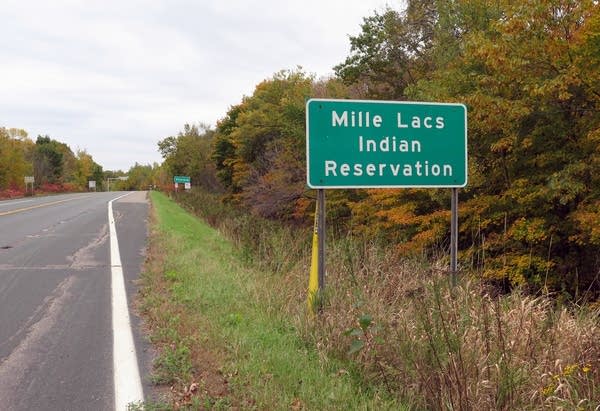Lack of agreement between Mille Lacs Band, county leaves tribal officers without policing power

When Pete Nayquonabe was growing up on the Mille Lacs Band of Ojibwe reservation, he knew everyone in the community.
These days, things are different. Unlike when he was a kid, Nayquonabe no longer lets his own children ride their bikes around the neighborhood alone.
"It's drug dealers, drug users, just the criminal element that's here," he said. "You can see it and feel it. And there's just a feeling of not being safe anymore."
Nayquonabe attributes that unease to a growing problem of opioid abuse — especially heroin — on this rural reservation near Mille Lacs Lake, about 100 miles north of the Twin Cities. The band reports there have been 49 overdoses this year, including a few deaths.
Create a More Connected Minnesota
MPR News is your trusted resource for the news you need. With your support, MPR News brings accessible, courageous journalism and authentic conversation to everyone - free of paywalls and barriers. Your gift makes a difference.
Tribal leaders say the public safety situation got worse last year, when Mille Lacs County terminated its law enforcement agreement with the band. That ended 25 years of cooperation between the band's police department and the county sheriff's office.
The agreement allowed the tribal police department to provide law enforcement on the reservation. Without it, tribal officers don't have authority under state law to act as peace officers and pursue their own investigations. They can arrest suspects, but they must turn them over to the sheriff's office.

Interim tribal Police Chief Sara Rice said that's a frustration.
"All the officers know that they can at least make a dent in this," Rice said. "It's never going to go away completely. But you can help to deter it in some way, or hold people accountable for what they're doing and what they're bringing here."
Gov. Mark Dayton has stepped into the dispute and called on the two sides to resolve their differences. He recently met with county officials and afterward voiced frustration.
"It's been 15 months," Dayton told reporters. "This impasse isn't any closer to resolution than it was back then. It can't continue like this. I stressed that point."
Dayton urged the county and the band to work out a new agreement in mediation. But reaching common ground could be difficult.
When Mille Lacs County terminated the cooperative agreement with the band in June 2016, county officials said the relationship had ceased to be cooperative. They said the band was exercising law enforcement authority outside of its jurisdiction and failing to coordinate with the county sheriff's office.
At the root of the disagreement is a longstanding feud over the reservation boundaries. The band believes the reservation consists of 61,000 acres set aside in an 1855 treaty with the federal government.
Mille Lacs County maintains it's limited to a fraction of that — only about 4,000 acres held in trust by the federal government.
The dispute flared up again about two years ago, when the band applied to the U.S. Department of Justice to allow federal prosecutors to charge crimes committed on the reservation.
As part of the application process, the Department of Interior weighed in with an opinion that the reservation's larger 1855 borders remain intact.
Mille Lacs County Attorney Joe Walsh said it's not appropriate to use public safety and law enforcement "to advance political goals."
Walsh disputes that law enforcement on the reservation has gotten lax since the cooperative agreement was revoked. He said the county hired about 10 new deputies and is providing equal coverage as before.
"Every call generally there's a response from the sheriff's office and also a response from the Mille Lacs Band police department," Walsh said. "So there's more officers available to provide lifesaving Narcan and other medical responses, more officers available to keep the peace."
He also said there hasn't been a drop-off in investigations of serious drug crimes or an increase in response times to crime reports, as the band claims.

But tribal leaders say drug dealers are targeting Native Americans and moving from one Minnesota reservation to the next.
"It's devastation to this community," said the band's chief executive, Melanie Benjamin. "You have drug dealers, gang members that have access to this illegal drug. And they come to the reservation and they sell it to our people or they give it to our people with the intent of getting them addicted, which happens very easily."
Rice said opioid addiction has led to an increase in burglaries, thefts and elder abuse.
"They're being taken advantage of, or stuff's missing from their houses," she said. "It's all to get the next high."
For Pete Nayquonabe and his wife, Shannon, the battle has hit close to home. They are raising two nephews born addicted to drugs and have had to watch loved ones struggling with addiction.
"Traditionally, we're all family," Nayquonabe said. "It affects us all, because we are all a tight community."